In order for plants to qualify as being grown organically they must not be treated with man-made nutrients or nutrient substitutes. This can mean that many organic soils lack in sufficient nutrients to enable plants to grow optimally, and challenges growers to provide the soil with the necessary nutrients without adding chemicals and alternative nutrients. Many soil types lack one or more nutrients or have lower levels than is ideal. A good quality fertilizer that is composed of only naturally forming nutrients is often all that is required to enrich the soil and make it suitable for good plant growing.
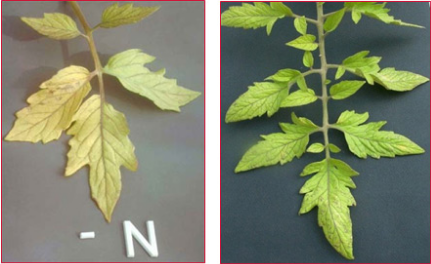 Nitrogen – Essential for strong, healthy plant growth, nitrogen can also have a detrimental effect on plants if the soil they are grown is contains high levels of it. The result of too much nitrogen is typically less blooms on flower plants, small, stunted plants, and a lack of a strong rooting system. Too little nitrogen can result in an inability to thrive, plants that are very small in comparison to their ideal size, and yellowed leaves.
Nitrogen – Essential for strong, healthy plant growth, nitrogen can also have a detrimental effect on plants if the soil they are grown is contains high levels of it. The result of too much nitrogen is typically less blooms on flower plants, small, stunted plants, and a lack of a strong rooting system. Too little nitrogen can result in an inability to thrive, plants that are very small in comparison to their ideal size, and yellowed leaves.
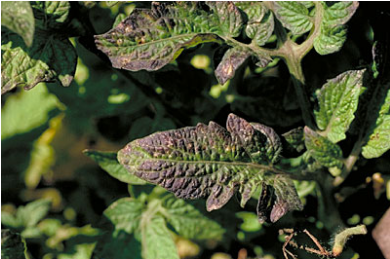 Phosphorus – Essential for plant growth and in flowering plants is essential to blooming, and in fruit trees is essential to fruit developing. Phosphorus is also essential to the resistance of plant diseases. When soil has too much phosphorus plants will exhibit stunted growth above ground but may have an extensive root system below ground. When soil is lacking in phosphorus flower plants will not bloom or have very few blooms, and fruit trees will bear no fruit.
Phosphorus – Essential for plant growth and in flowering plants is essential to blooming, and in fruit trees is essential to fruit developing. Phosphorus is also essential to the resistance of plant diseases. When soil has too much phosphorus plants will exhibit stunted growth above ground but may have an extensive root system below ground. When soil is lacking in phosphorus flower plants will not bloom or have very few blooms, and fruit trees will bear no fruit.
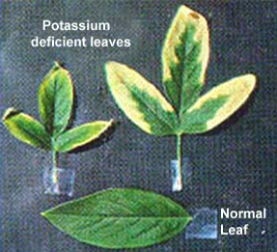 Potassium – Essential to the strength of plants, it is also aids in the ripening of fruit. It also provides some resistance to plant diseases. When potassium levels in the soil are too high the result is often an ability to absorb the necessary levels of magnesium and calcium essential to plant health. Leaves may appear scorched, and resistance to plant diseases becomes very much reduced. Too little potassium has a similar effect in that leaves may scorch, resistance to disease, pests, frost and drought is low, and in addition plants grow very slowly and do not realize their full strength or size.
Potassium – Essential to the strength of plants, it is also aids in the ripening of fruit. It also provides some resistance to plant diseases. When potassium levels in the soil are too high the result is often an ability to absorb the necessary levels of magnesium and calcium essential to plant health. Leaves may appear scorched, and resistance to plant diseases becomes very much reduced. Too little potassium has a similar effect in that leaves may scorch, resistance to disease, pests, frost and drought is low, and in addition plants grow very slowly and do not realize their full strength or size.
In addition to these three major elements the following have an important role to play in plant health:
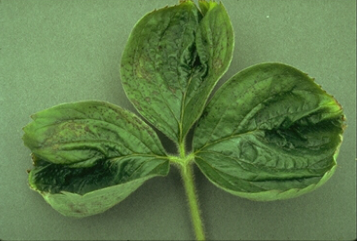 Calcium – Essential to the development of a strong, healthy root system which in turn allows the plant to grow and thrive, calcium is also essential to cell health and the formation of new cells. Resistance to diseases is also reliant upon the presence of sufficient levels of calcium.
Calcium – Essential to the development of a strong, healthy root system which in turn allows the plant to grow and thrive, calcium is also essential to cell health and the formation of new cells. Resistance to diseases is also reliant upon the presence of sufficient levels of calcium.
Magnesium – The presence of adequate levels of magnesium aid in the uptake of calcium, but also has a role to play in the greenness of leaves and the formation and growth of vegetables.
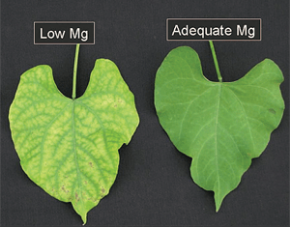
Sulfur – Also contributes to the greenness of leaves as well as the maturing of seeds and fruits.
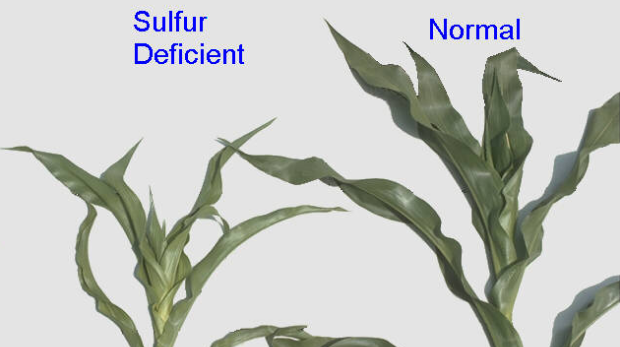
There are also a number of plant nutrients classed as micronutrients that each contributes a small amount to the healthy growth of plants. These micronutrients include (in no particular order of importance) zinc, iron, boron, manganese, chloride, copper, manganese, and molybdenum.
